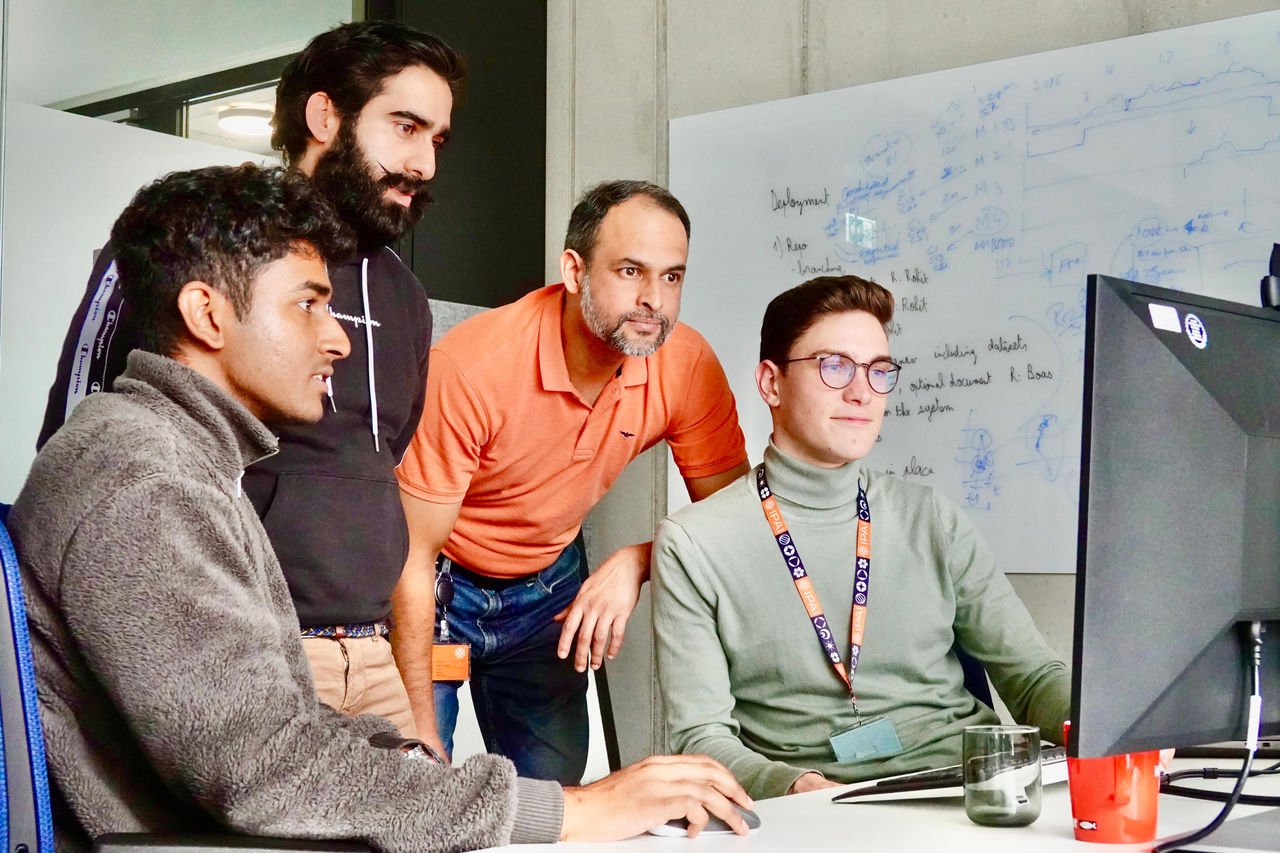bronze partner
23 October 2025
ebm‑papst presents energy-saving AI cooling tech at IPAI Heilbronn launch
At the groundbreaking ceremony for the IPAI Campus in Heilbronn, Germany, ebm‑papst highlighted its contribution to energy-efficient cooling for AI data centers. The event, attended by German Chancellor Friedrich Merz, marked a key milestone for the Innovation Park for Artificial Intelligence (IPAI), where ebm‑papst has been active for two years.
The company, a specialist in fans and motors, is developing hardware infrastructure to reduce energy use in AI-driven data centers. With global power consumption by data centers projected to more than double to 945 terawatt-hours by 2030, according to the International Energy Agency, the efficiency of supporting technologies is becoming increasingly critical.
As part of its response, ebm‑papst introduced the NEXAIRA platform. This system combines high-efficiency fans with smart data analysis and motor control. In a data center in Frankfurt, the platform reportedly reduced cooling energy use by about 50%, cutting overall data center energy consumption by approximately 15%.
“Software and hardware are two sides of the same coin,” said Klaus Geißdörfer, CEO of ebm‑papst. “The AI applications of the future are being developed at the IPAI, and we ensure that they can also run efficiently.”
Some AI components of NEXAIRA are developed by ebm‑papst staff working at the IPAI site, in collaboration with other companies through IPAI’s Affinity Circles. This local ecosystem has also led to initiatives like Next Level Mittelstand, a joint venture with companies including Schunk, StackIT, and Pepperl+Fuchs, aiming to accelerate AI adoption in medium-sized enterprises.
Jan Philippiak, representing the company’s shareholder families, said: “We are consciously investing in Germany and in our region as an AI hub because the ideal conditions are being created here.”
Research at the company’s headquarters in Mulfingen now includes development of next-generation cooling technologies, including liquid-based systems and high-performance compressors, as ebm‑papst adapts its core fan technology to emerging AI infrastructure needs.
The company, a specialist in fans and motors, is developing hardware infrastructure to reduce energy use in AI-driven data centers. With global power consumption by data centers projected to more than double to 945 terawatt-hours by 2030, according to the International Energy Agency, the efficiency of supporting technologies is becoming increasingly critical.
As part of its response, ebm‑papst introduced the NEXAIRA platform. This system combines high-efficiency fans with smart data analysis and motor control. In a data center in Frankfurt, the platform reportedly reduced cooling energy use by about 50%, cutting overall data center energy consumption by approximately 15%.
“Software and hardware are two sides of the same coin,” said Klaus Geißdörfer, CEO of ebm‑papst. “The AI applications of the future are being developed at the IPAI, and we ensure that they can also run efficiently.”
Some AI components of NEXAIRA are developed by ebm‑papst staff working at the IPAI site, in collaboration with other companies through IPAI’s Affinity Circles. This local ecosystem has also led to initiatives like Next Level Mittelstand, a joint venture with companies including Schunk, StackIT, and Pepperl+Fuchs, aiming to accelerate AI adoption in medium-sized enterprises.
Jan Philippiak, representing the company’s shareholder families, said: “We are consciously investing in Germany and in our region as an AI hub because the ideal conditions are being created here.”
Research at the company’s headquarters in Mulfingen now includes development of next-generation cooling technologies, including liquid-based systems and high-performance compressors, as ebm‑papst adapts its core fan technology to emerging AI infrastructure needs.
Related tags: ebm‑papst
Related news
ebm‑papst launches training programs for 76 new recruits across Ger...
On September 1, 2025, fan manufacturer ebm‑papst began training 76 new trainees and dual students at its locations in Mulfingen, Landshut, and St. Georgen, Germany. The company offers 28 different ...
11 Sep 2025
ebm‑papst wins German Sustainability Award for oil-free turbo compr...
The ebm‑papst Group has received the German Sustainability Award Products 2026 in the “Climate” category for its oil-free turbo compressor, CompaNamic.
According to the award jury, CompaNamic ...
14 Nov 2025
Secop marks 15th anniversary with world tour stop in Italy
Secop has celebrated the fifth stop of its 15th anniversary world tour at its office in Turin, Italy. The event highlights the company’s focus on a customer-centric approach and its continued i...
06 Dec 2025
ebm‑papst opens expanded plant in Xi’an as part of China growth str...
ebm‑papst has officially opened its expanded manufacturing plant in Xi’an, China, marking a key milestone in the group’s “Local for Local” strategy. The facility, first launched in 2019, now spans ...
22 Oct 2025
RDM marks 25 years with leadership changes and sustainability push
UK-based Resource Data Management (RDM) is celebrating its 25th anniversary in 2025, highlighting recent leadership changes, product innovation, and a growing focus on sustainability and new in...
02 Dec 2025
ebm‑papst introduces new AxiBlade.Perform fans for refrigeration an...
German manufacturer ebm‑papst has expanded its AxiBlade series with the launch of AxiBlade.Perform axial fans in EC technology. Designed for use in refrigeration and air conditioning systems such a...
25 Nov 2025
